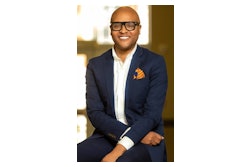People who read my blog know my stance on the Harvard affirmative action case where it now seems persistence may yet pay off for the diversity denier of all time, one Ed Blum.
He’s dedicated his life to upending diversity and race equity everywhere in society from voting rights to higher ed.
And now it looks like his time has come. Emil Guillermo
Emil Guillermo
Conservatives aren’t automatically against affirmative action. The late Justice Sandra Day O’Conner wasn’t. And to the court’s credit, it’s always allowed for race to be addressed within reason. No quotas, of course. But race has always been allowed as a factor in challenges like he Grutter decision. And even in the Fisher v. Texas case.
That’s when Blum, who was the Oz in the Fisher case, realized he had the wrong plaintiff. A white woman wasn’t even good enough for Antonin Scalia.
So Blum shamelessly ambulance chased for bereaved Asian Americans who were rejected by Harvard and UNC, and that’s where we are now.
Blum and his white proxies fighting affirmative action. It’s the “model minority” express.
The only other thing that’s changed is the makeup of the court with a decidedly conservative DNA.
And that’s why the Halloween event of the year will involve the black robes of SCOTUS hearing the Harvard and UNC affirmative action cases.
We just won’t know whether it will be trick or treat. Or all trick.
That will come once we get a vote and an opinion later in 2023.
For now, the practical are gearing up for the likely decision of a court hell bent on reversal of solid precedent in everything we know, from abortion to same-sex marriage. And that means one thing for affirmative action advocates after the decision is handed down: Prepare to defend diversity with all your might.
It won’t be easy.
At a webinar that I recently attended, Thomas Saenz of MALDEF (Mexican American Legal Defense and Education Fund) warned that if the decision goes against affirmative action supporters, to be wary of what he called any “over-interpretation” of what the end of race conscious admissions really means.
The decision doesn’t apply to anything but the admissions process period. Nothing else. Not to ethnic studies and its legitimacy. Not to anything but admissions. And it does not mean an end to diversity. It only means an end to current means of evaluation and a move toward “race neutral” methods.
What is that precisely? That’s where the creativity comes in.
“There were many policymakers and other decision-making bodies that considered they could not discuss race at all,” Saenz said in the webinar.
Saenz said when California passed Prop. 209 in 1996 ending affirmative action in college admissions, as well as public employment and contracting, there was an aggressive overreach on what the law really meant.
That resulted in a failure to assess or even address the racial disparities that California continues to see, he said. The nation will need to guard against that if the SCOTUS decision ends affirmative action. If we’re forced into colorblindness, it makes the job harder to achieve racial equity, but it doesn’t mean we give up.
What are some ways to address the issue? Getting rid of standardized tests that clearly discriminate against poor BIPOC communities has been one way that some schools have adopted. Another may be in reducing the value of teacher recommendations. Moreover, a SCOTUS decision means rethinking what “merit” itself means.
“Affirmative action” won’t necessarily end with the Harvard/UNC cases, nor will schools be relieved of trying to create equity.
Instead, schools will have to come up with new race-free standards defining merit.
Students now think straight A’s and test scores entitle them to admission. We already know it doesn’t. That’s why Blum and his rejected students sued, not for the grades part, but on race grounds.
Somehow going in, schools are going to have to come up with a comprehensive rubric in the colorblind era that gets us student populations that reflect our diverse values and communities. It’s not going to be easy. But the court may push diversity advocates to think about achieving equity in a brand-new way.
And that’s the point, if the court goes against more than 40 years of precedents, and rejects affirmative action what is fair? We’ll all get to decide race-neutral. It doesn’t mean we can’t talk about it. It just means admissions can’t be based on it.
Diversity will be harder, but it won’t be dead.
Emil Guillermo is a journalist and commentator. You can follow him on Twitter @emilamok.



















